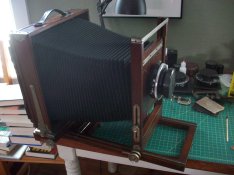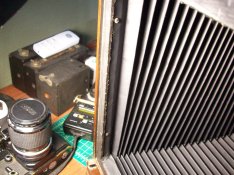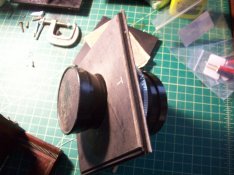Murrayatuptown
Subscriber
Thank you for ANSI drawing. I had that printed out years ago but it ended up in one of many boxes of other printed out reference gems. Glad to see this again.
A Gundlach 8x10 Radar f/4.5 in a Betax #5 shutter is a big, HEAVY combination...probably too much so for that camera, unless you make a "crutch" to support it.







This is one helluva find. Not just a rare old camera but one with a fascinating history.
Since its is a Rochester camera, most probably Eastman plateholders should fit, for instance (I'm not related to the seller):

NICE Antique 8x10 Glass Plate Holder. Eastman KODAK. View Camera Photography | eBay
Made by Eastman Kodak-- in the teens to 1920's. It is made of mostly wood and is for Glass Plates, not sheet film (unless you modify it), and thus it's a little thicker than the sheet film holders of the era.www.ebay.com
or the ones made by Folmer & Swing:

8x10" Vintage Wood Film Holder, Sterling, Folmer&Schwing Eastman Kodak Awesome • $35.00
8X10" VINTAGE WOOD Film Holder, Sterling, Folmer&Schwing Eastman Kodak Awesome - $35.00. FOR SALE! This is the only holder of it's kind that I have ever seen. The holder was ready to go in my studio when I made the decision to not shoot large format film anymore, so my loss is your gain. This...picclick.com
...with these 'film insert sheats', you can use the holders with currently available sheet film
A Gundlach 8x10 Radar f/4.5 in a Betax #5 shutter is a big, HEAVY combination...probably too much so for that camera, unless you make a "crutch" to support it.
| Photrio.com contains affiliate links to products. We may receive a commission for purchases made through these links. To read our full affiliate disclosure statement please click Here. |
PHOTRIO PARTNERS EQUALLY FUNDING OUR COMMUNITY:  |